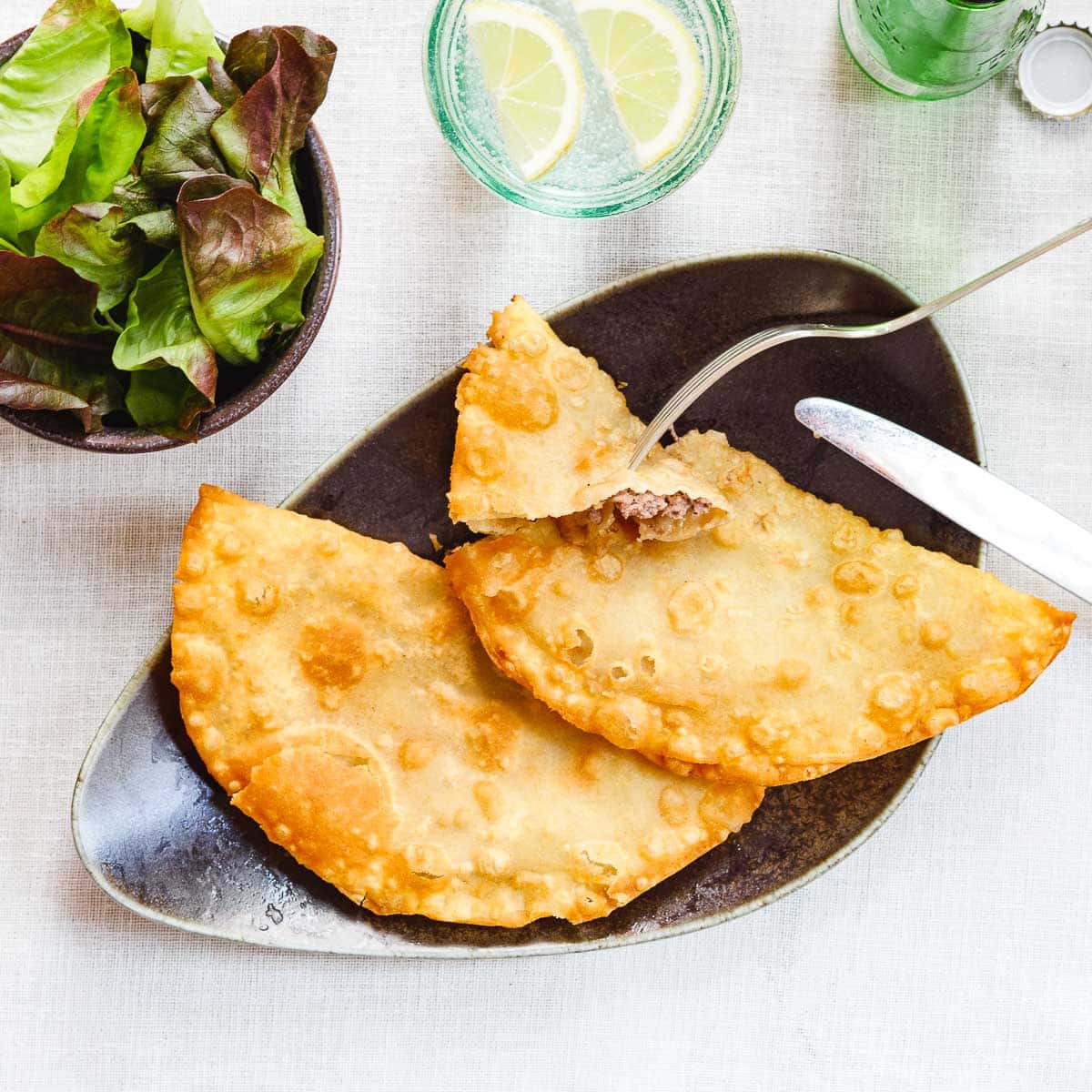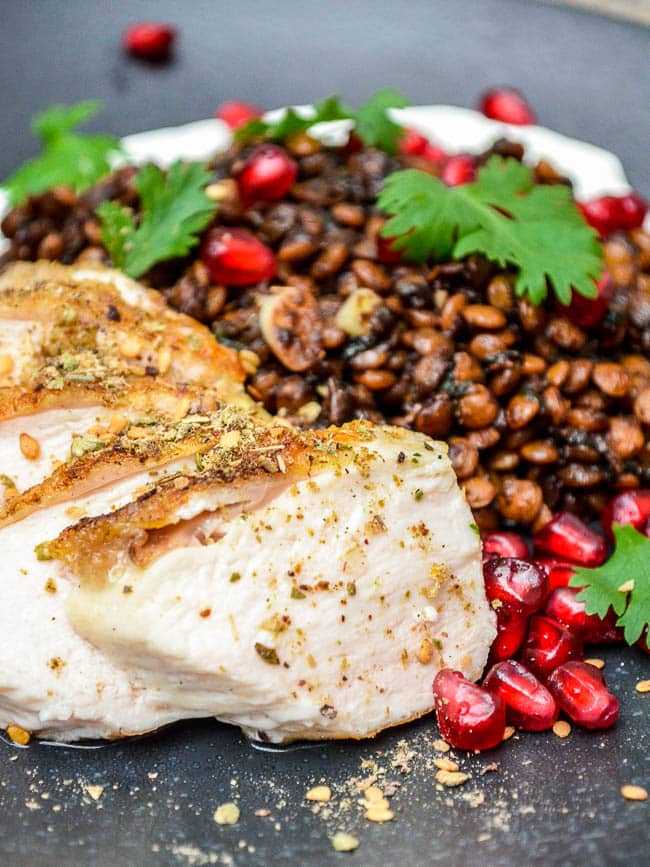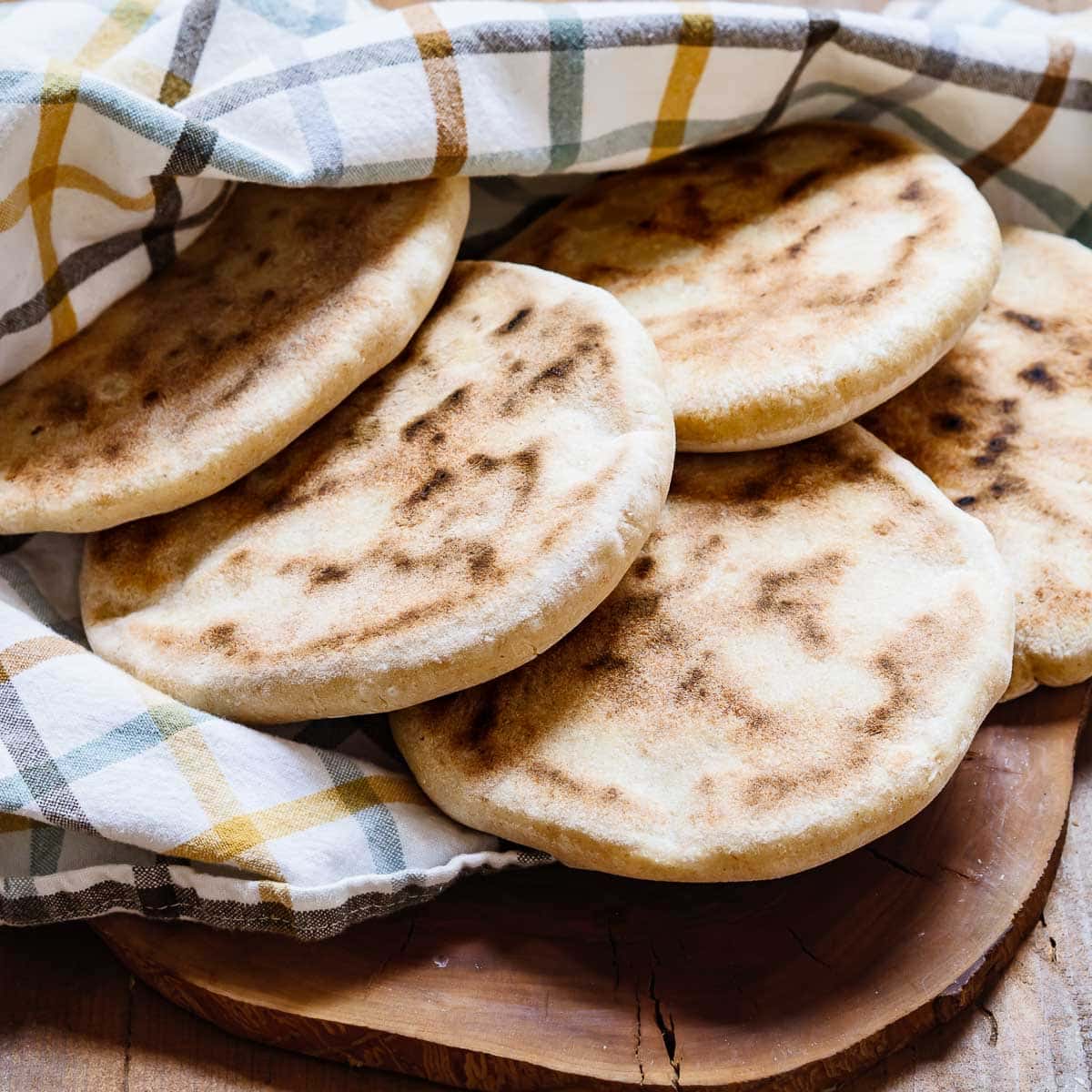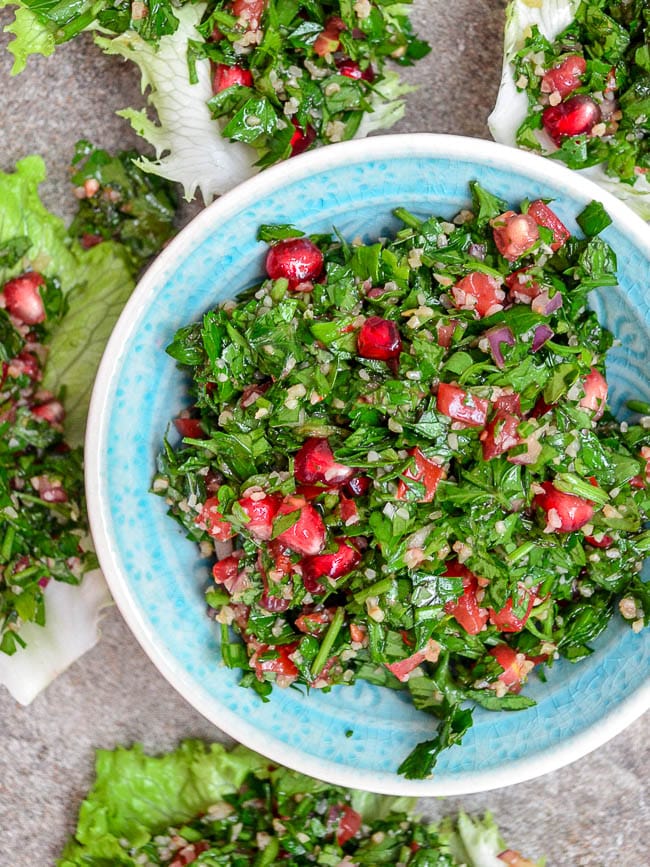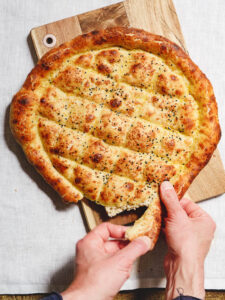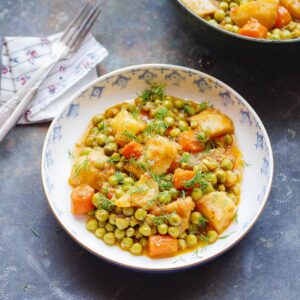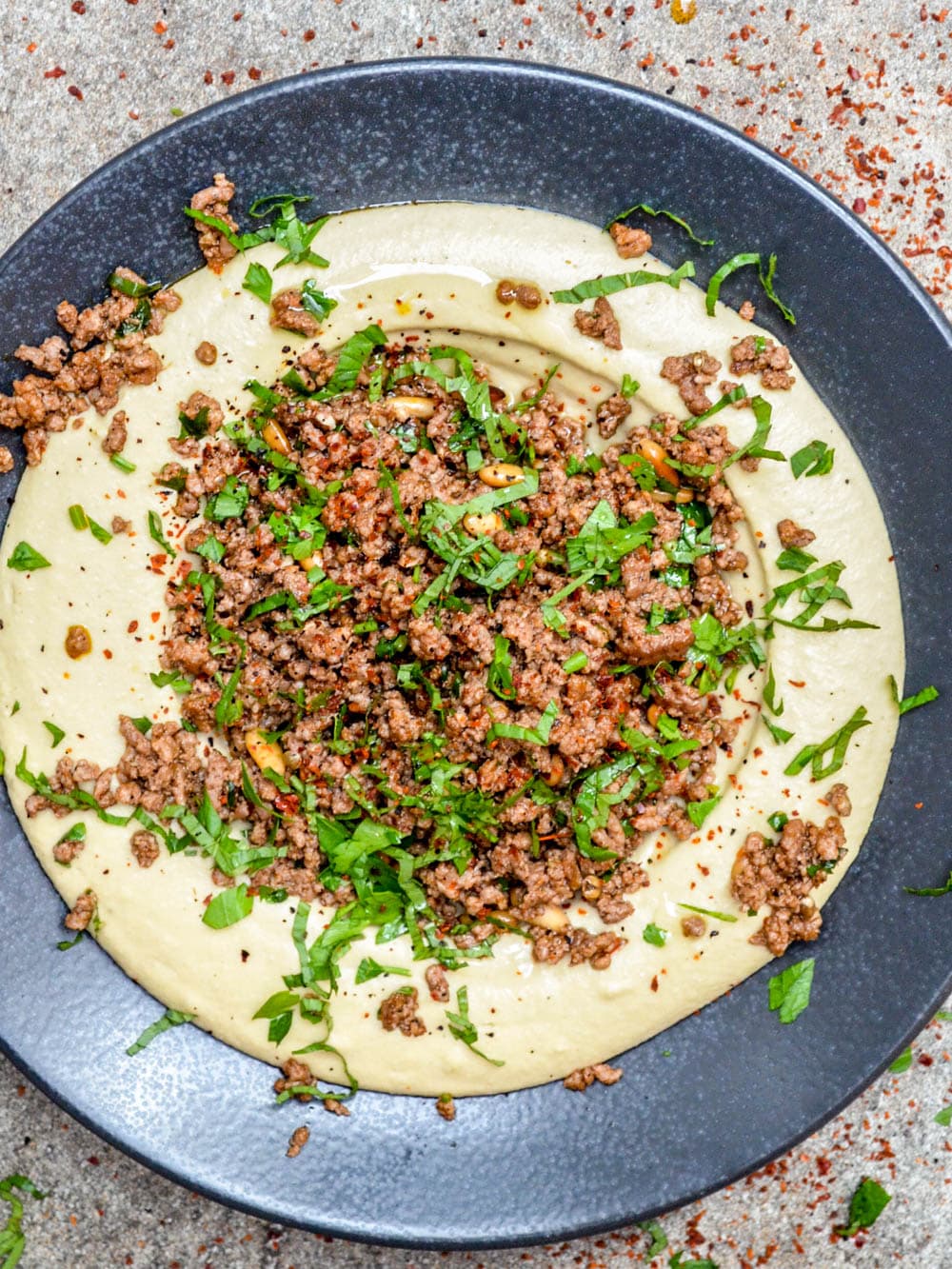Let me introduce you to the national dish of the Crimean Tatar kitchen. Chebureki, a savoury turnover with a juicy stuffing. Delicious!
A popular street food, I love making this for a cheeky weekend lunch.
A little background
While thought to be of Crimean Tatar origin, chebureki is eaten widely throughout Central Asia, Russia, former Soviet Republics, Eastern Europe and Turkey. In many ways, it’s typical of food hailing from Central Asia, where various dishes composed of wheat flour, meat, onion and little else are very common.
If you’ve ever visited Turkey, you may know it as çiğ börek or çibörek. It’s a popular dish here, too, with particular links to the city of Eskişehir.
That fact should surprise no one – it’s the Turkish city that has seen the strongest tatar migration. Many have settled here, making their national dish so popular with the locals that many Turks consider the dish quintessentially Turkish.
The name, though, should have given them pause for thought, as it did with me.
Çiğ börek means raw börek, or raw pastry. Rather confusing for a dish that’s not just cooked, but deep fried (though I shallow fry it at home). I thought perhaps it was because the filling was put in raw, but, alas, it turns out that “che” means “delicious” in tatar language. Mystery solved!
And a delicious pastry it is.
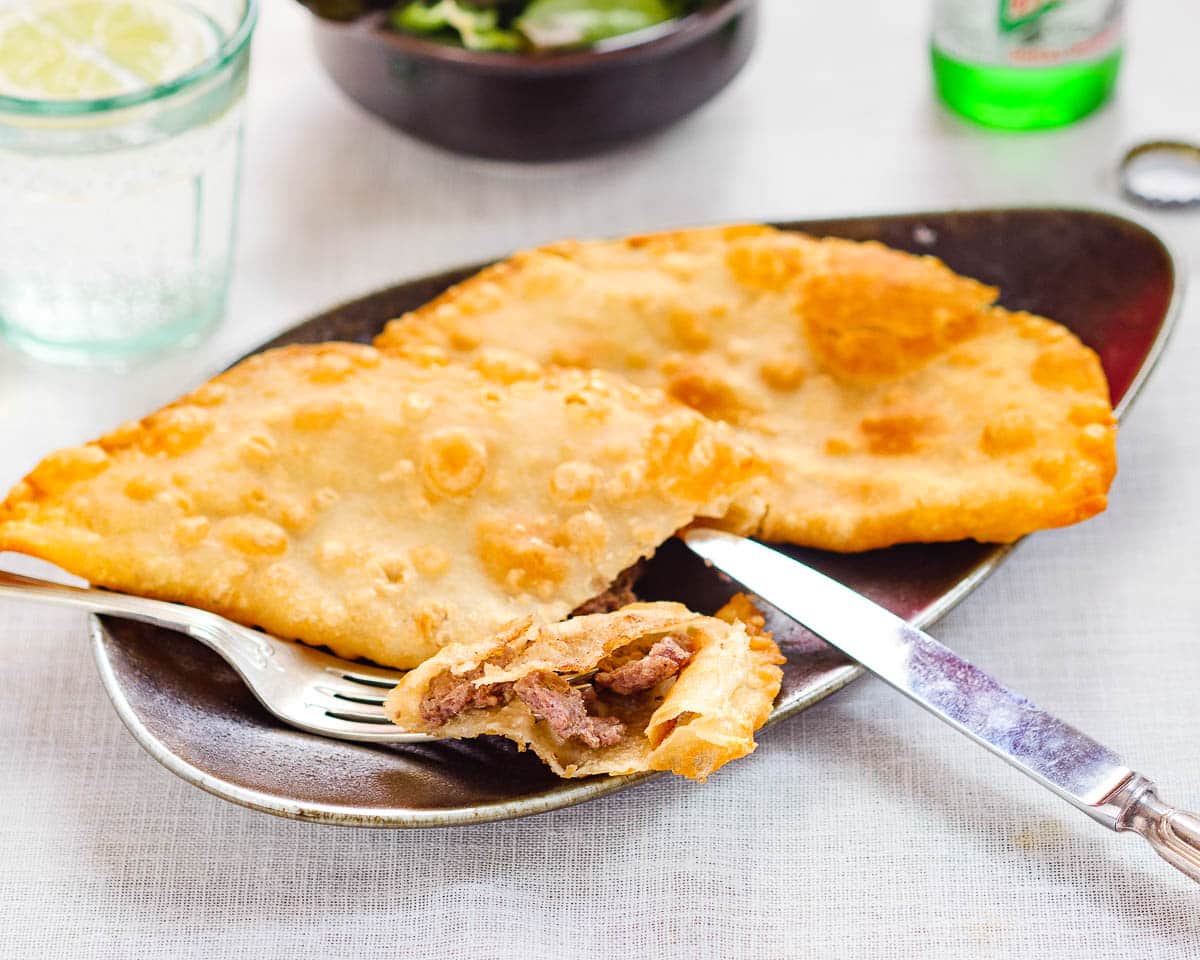
How to make chebureki
If you’re the kind that instantly turns away from any recipes involving deep frying, thinking it’s time consuming or complicated, don’t. Chebureki is one of the quickest and easiest homemade pastries you can make from scratch at home.
The dough
The dough is plain and not yeasted. It comes together very quickly and barely needs any rest before you proceed to shape your böreks. In fact, it’s so quick and easy I do it all by hand, though you could of course use a stand mixer, if you prefer.
The filling
As for the filling, it couldn’t be simpler.
A mixture of minced meat, onion, salt, pepper and a little water. I like to prepare my onions in two ways – partly minced and partly chopped – to add both moisture and texture.
I’d imagine lamb is the traditional meat, but beef also works really well here.
I should say that some recipes use more water than I do, so feel free to increase the amount for an extra juicy version. On the flipside, this’ll make it slightly more tricky to make, so keep that in mind.
And a word of advice: Don’t forget that black pepper is your spice here. Be generous! And because of the deep frying, you’re probably going to want a touch more salt than you’d usually add. (I never said this was a healthy dish!)
The mixture doesn’t need pre-frying, so once your onion is prepared, it’s as simple as mixing everything together.
The shaping
There’s no complicated shaping, either.
The shape is that of a half moon, which is as easy as folding one half of a circle over the other. I use a plate to cut off excess dough and make a perfect circle. No need to worry too much about your rolling pin skills, then!
It’s important to make sure it’s sealed properly, so it doesn’t leak during cooking. A fork is useful here. As a bonus, it looks better, too!
I like to trim off the edges for a perfectly circular shape. Don’t go overboard with the filling.
The only tricky part comes halfway through frying. The literal act of turning over the turnover.
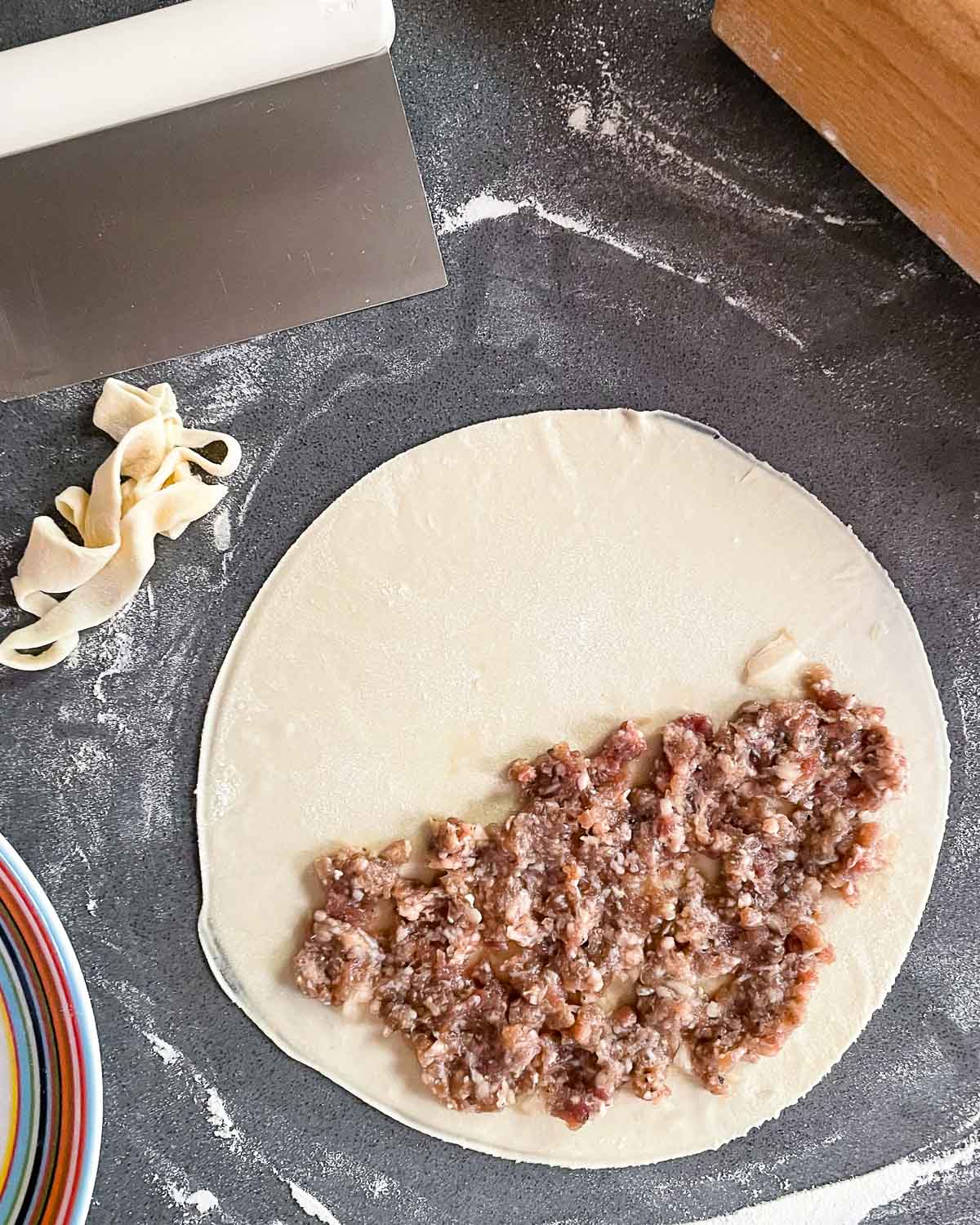
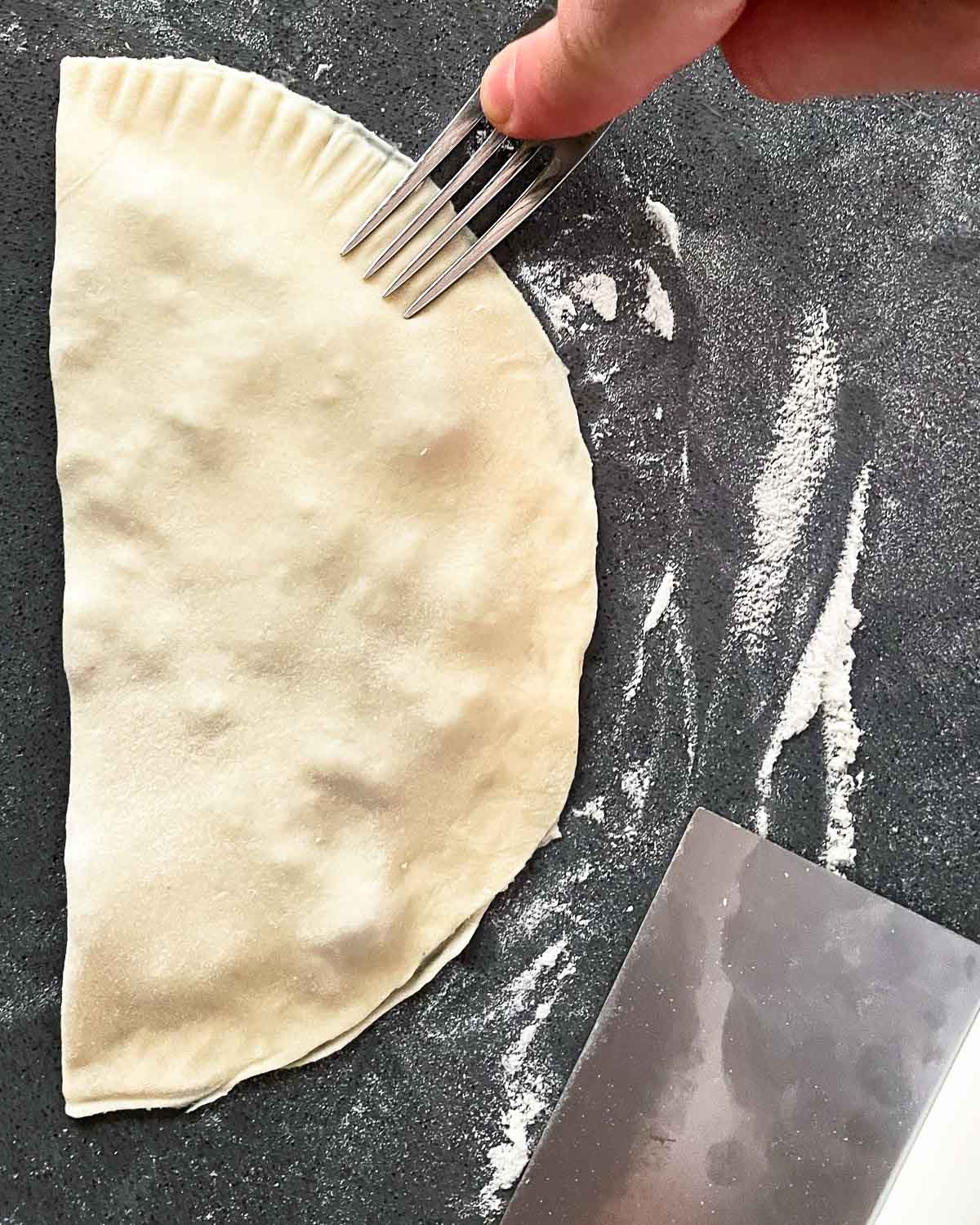
The frying
Chebureki is quite large, so I prefer to shallow fry rather than deep fry it at home.
This has one drawback: If you’re not careful, turning it may cause splashing. And we definitely don’t want that to happen!
I like to use two spatulas when turning the chebureki. I use one to lift it, until it’s essentially at a 90 degree angle, and the other to catch it as soon as it’s vertical, so it doesn’t splash any oil as I gently lower it down on the other side.
Even this isn’t too difficult, but it does require a moment of concentration.
I like to make the chebureki slightly smaller than my frying pan, and shallow fry two at a time.
Your reward for this, arguable reasonably light, effort?
A delicious pastry that’s crispy on the outside and deliciously juicy and flavourful on the inside.
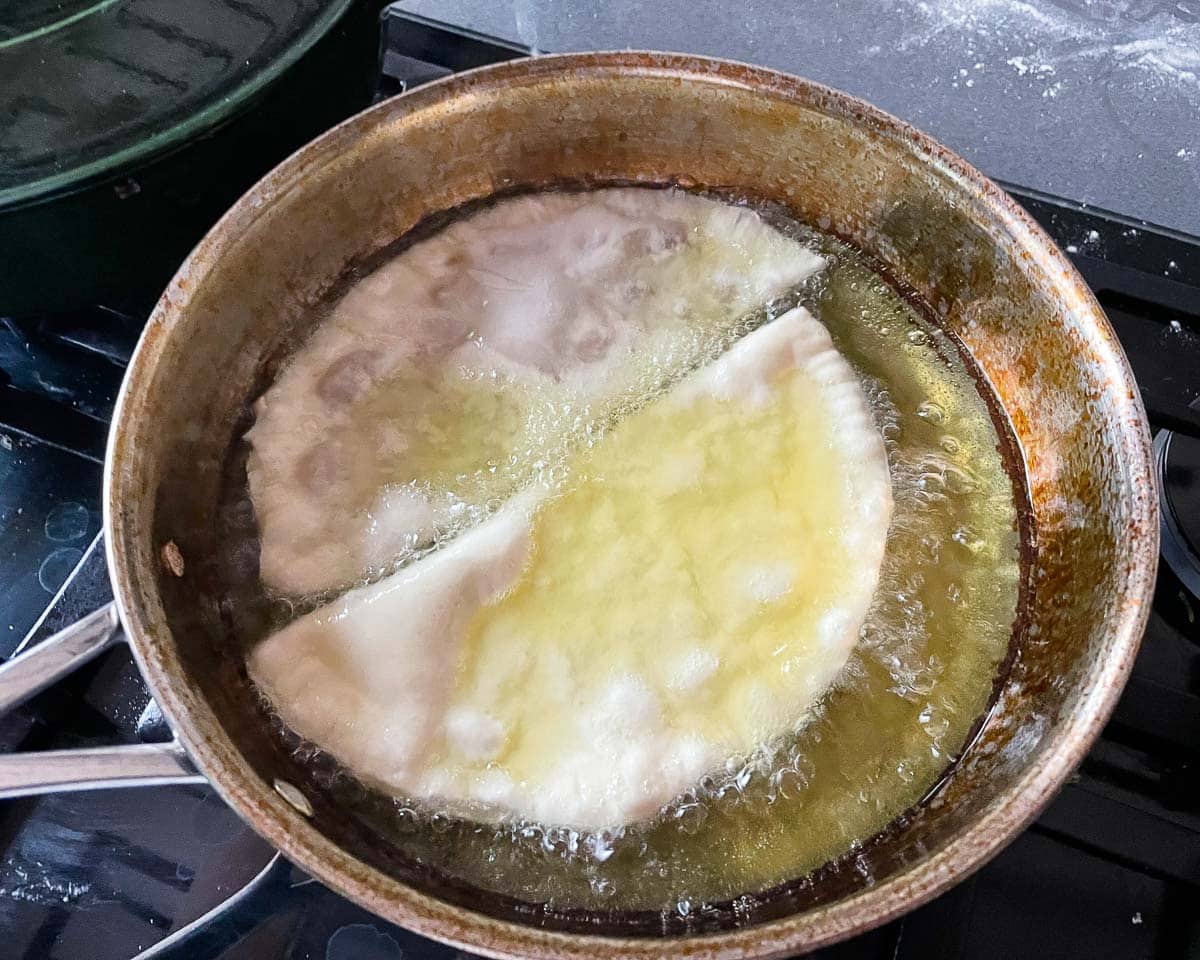
Serving suggestions
Unsurprisingly, chebureki is a popular street food, but it’s also common to make it at home.
I wasn’t able to find much information about how it’s served in traditional Crimean Tatar cuisine, but in former Soviet republics the preferred sides appear to be pickles and smetana (sour cream). Can’t go wrong with that!
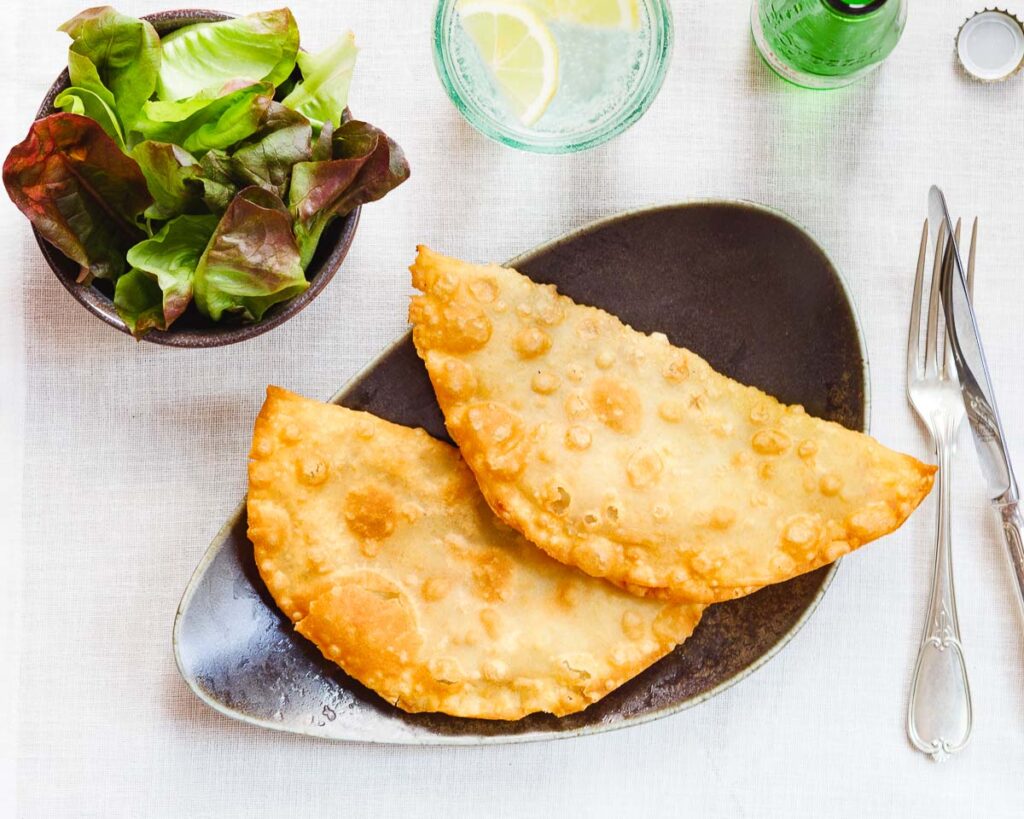
The Turkish custom is to enjoy it with a glass of ayran, the refreshing and salty yoghurt drink. A refreshing salad heavy on the lemon or vinegar will never go wrong, either. Shepherd’s salad is a popular choice in Turkey, though a zingy green salad is a great match, too.
Like your stuff hot? Fiery Palestinian shatta will go great alongside it, as will any other hot sauce you may favour.
Making ahead or the yield more than you can eat? Freeze the shaped but uncooked chebureki and fry them later (they don’t reheat well once cooked).
Enjoy!
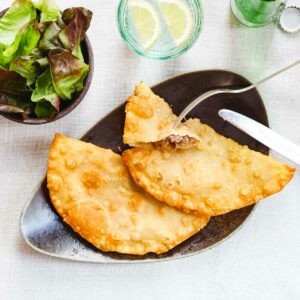
Chebureki (Fried turnover with meat)
Ingredients
- 150 g plain flour
- ½ tsp baking powder
- ½ tsp salt
- 75 g water, or more to personal preference
- 20 g yoghurt
- 15 g butter
- vegetable or olive oil, for frying
Meat & onion filling
- 1 large onion
- 200 g minced beef, or lamb or a mixture (7 oz)
- 3 Tbsp water
- ½ tsp salt
- ½ tsp freshly ground black pepper
How I make it
- Combine flour, baking powder and salt. Add water, yoghurt and melted butter. Bring together to a dough, then knead until relatively smooth, but don’t overdo it. A few minutes is enough, even by hand. Cover with a damp cloth and leave to rest for 15 minutes.
- Meanwhile, process three-quarters of the onion very finely in a food processor. Finely chop the rest. Mix with minced meat, water, salt and black pepper.
- Divide the dough into six pieces. Roll each piece into a circle slightly smaller than your frying pan, using a plate to trim the edges for a perfectly circular shape (mine’s 21½ cm/8½ in diameter). Place a thin layer of filling on one half, leaving a 1 cm/½ in edge. Moisten the edges and fold over. Seal by pressing the edges down, first with your fingers and then with a fork, making sure not to trap any air inside the pastry.
- Heat a generous amount of oil in a large pan with high sides over medium heat. To check that your oil is hot enough, add a small piece of bread. If it sizzles immediately, it’s hot enough. Fry each chebureki until golden brown and crispy all over, 2-3 minutes on one side and about a minute on the other. If yours take considerably more or less than that, your oil is too hot or too cold, so you may want to adjust your heat. I fry two cheburekis at a time. Drain on kitchen paper.
- Serve immediately with your preferred sides, if any.


